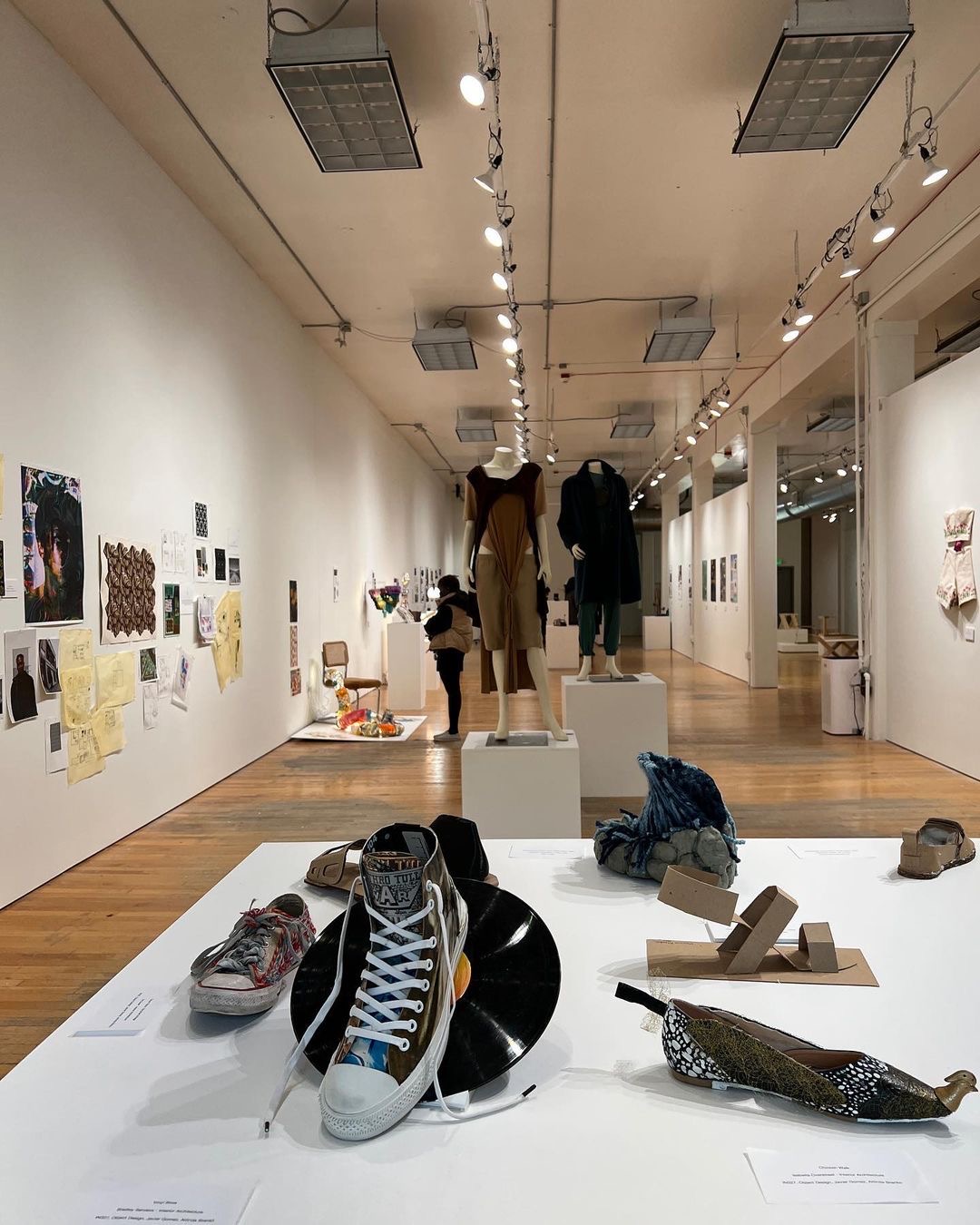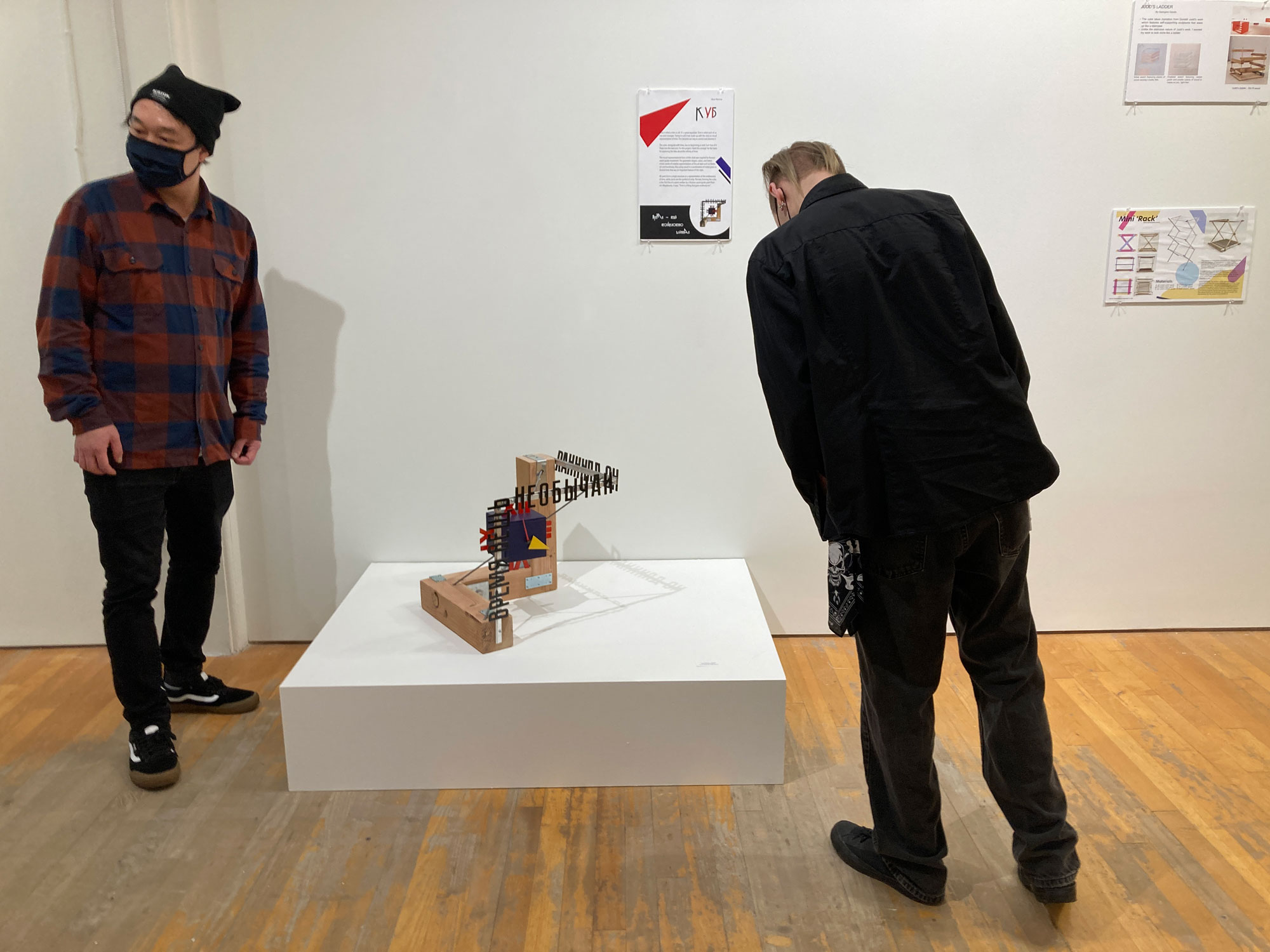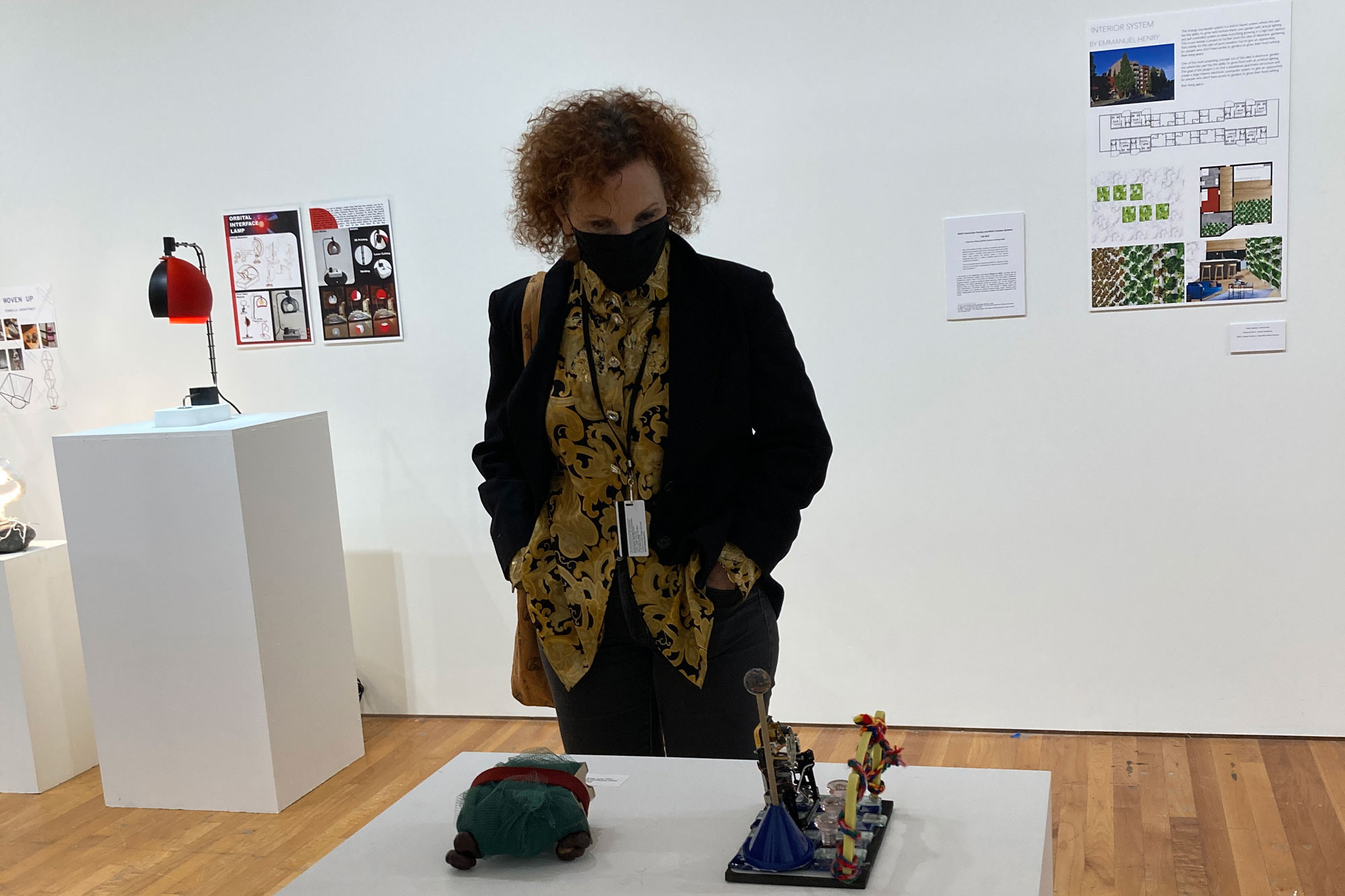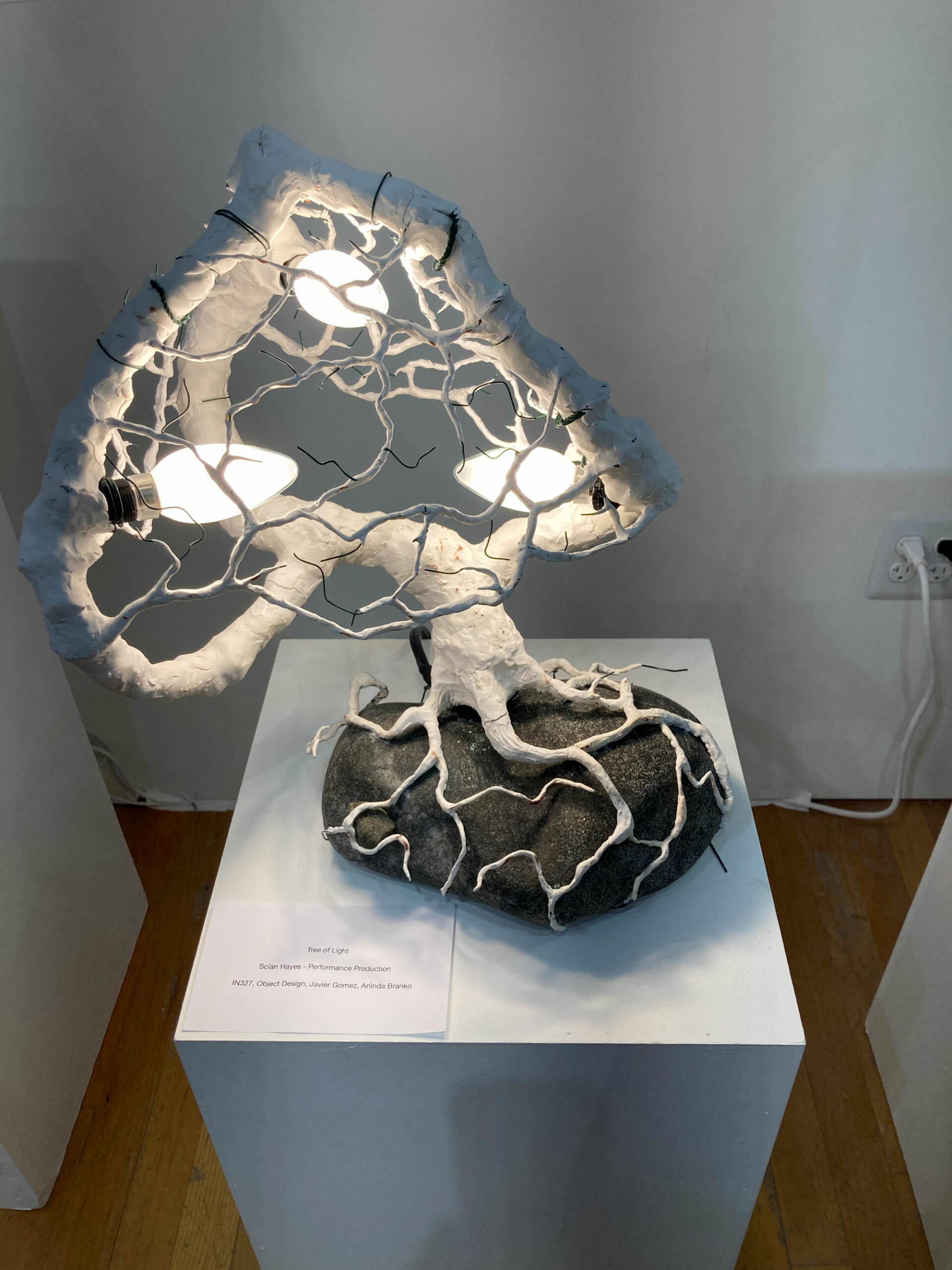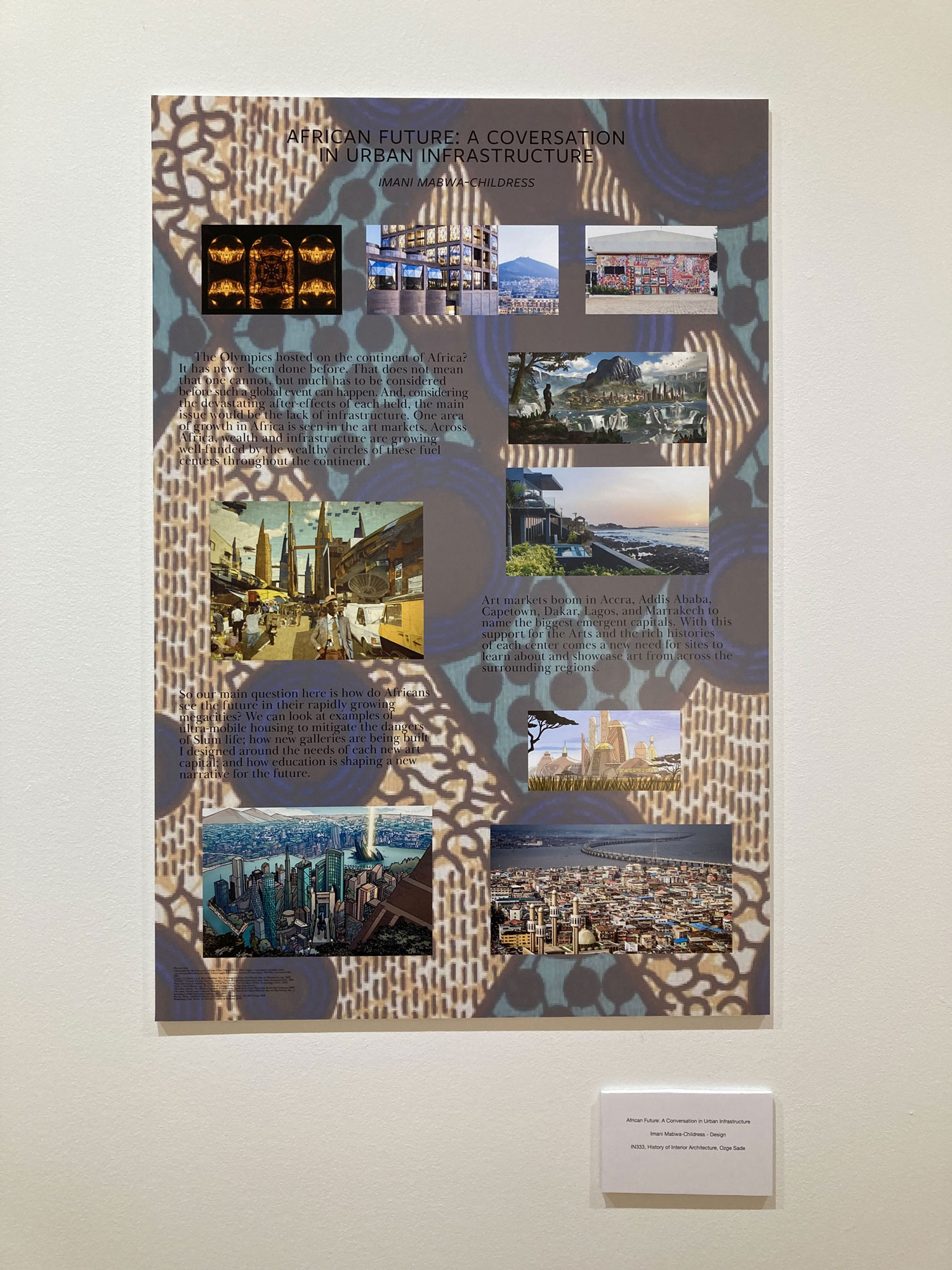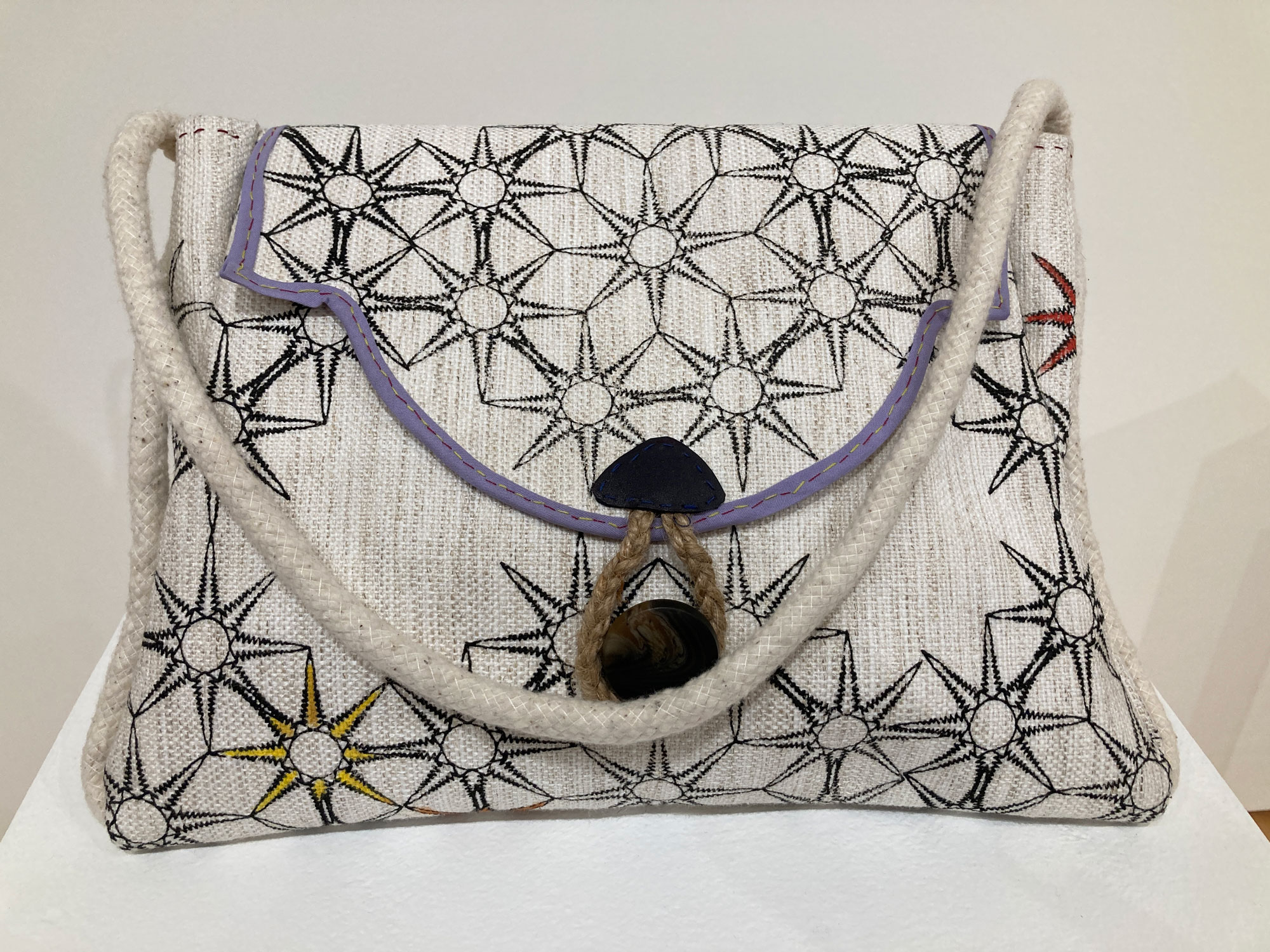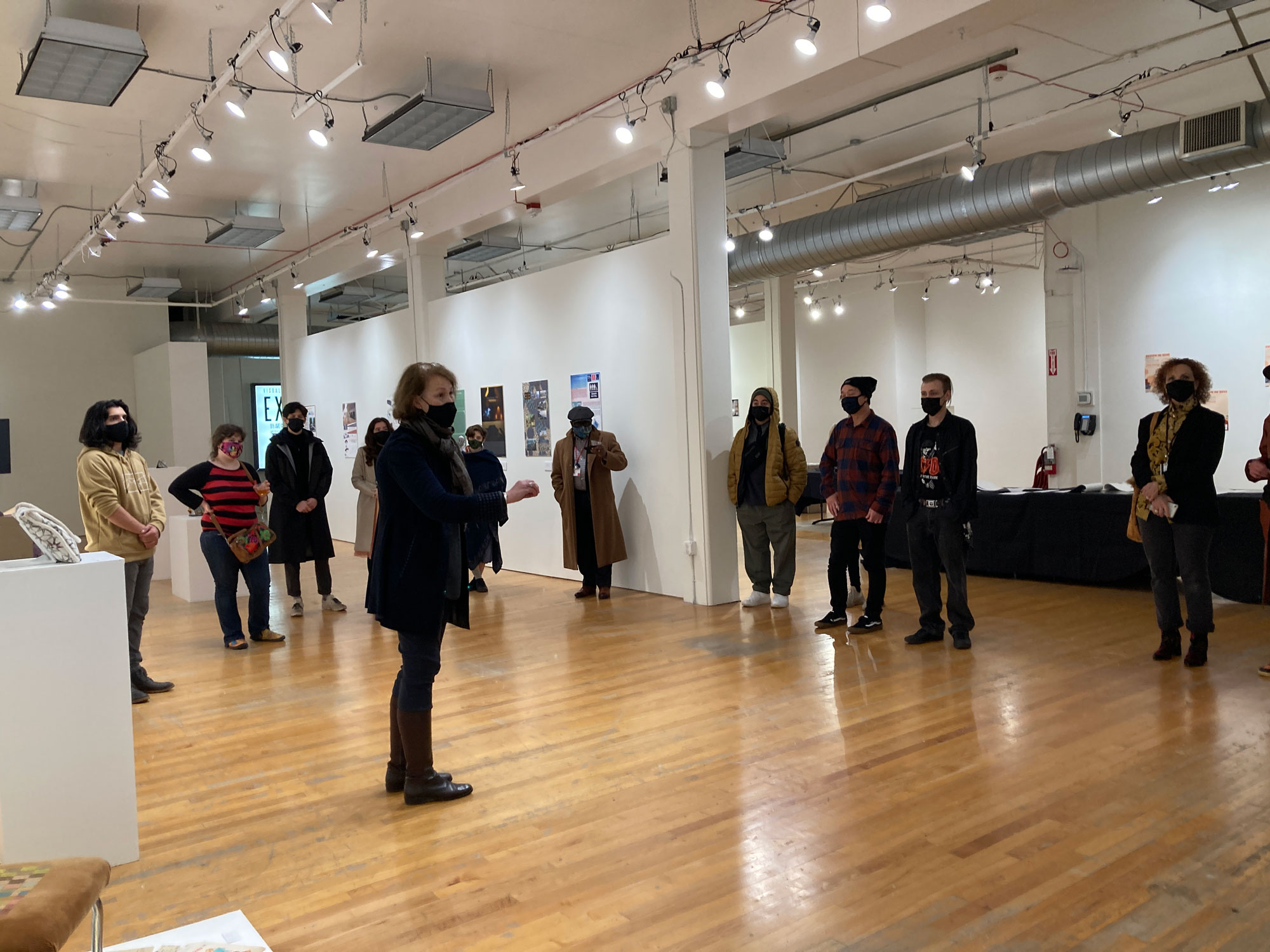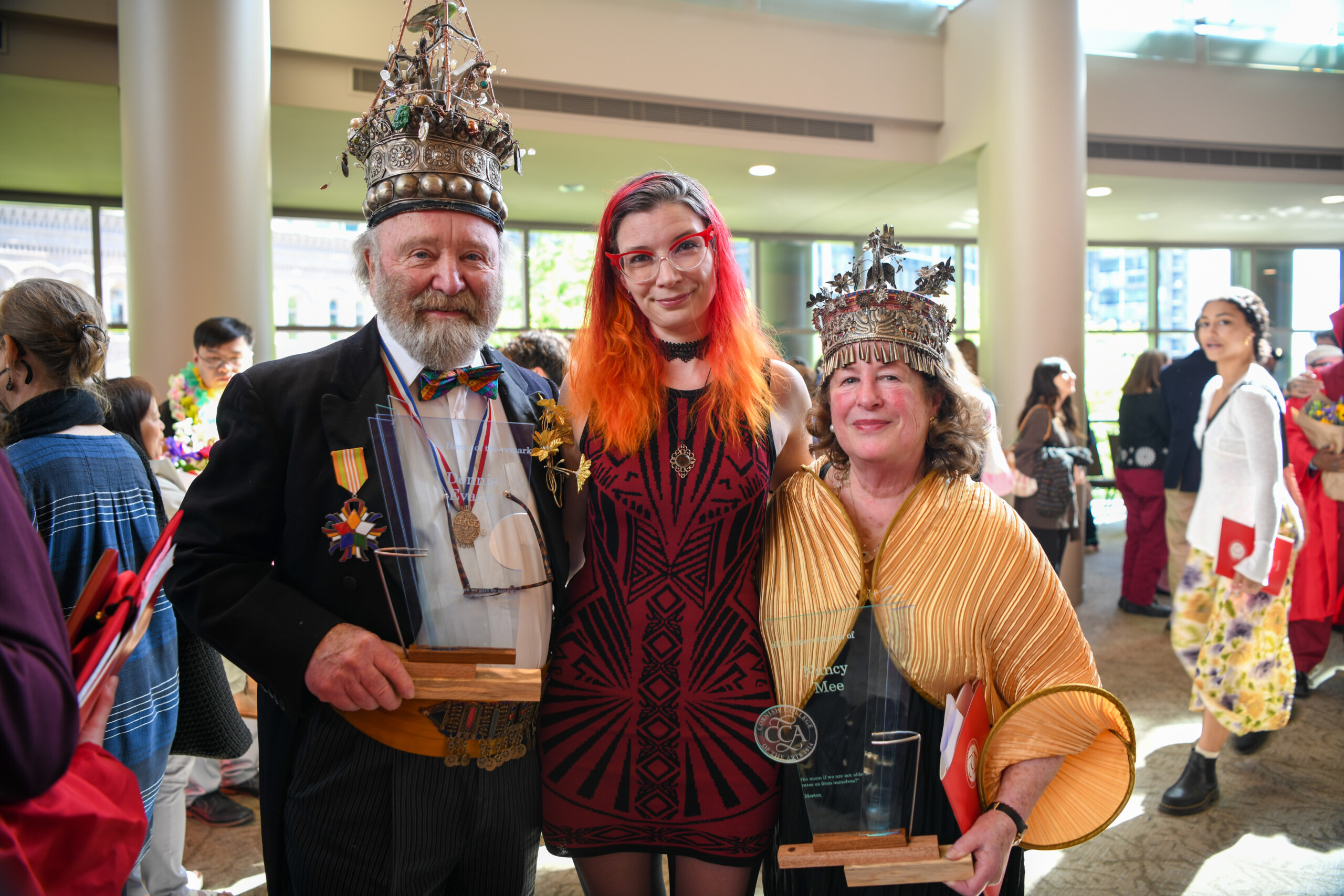Designing for the Future: Interior Architecture Students Look Ahead in ‘Design for 2040’ Exhibit
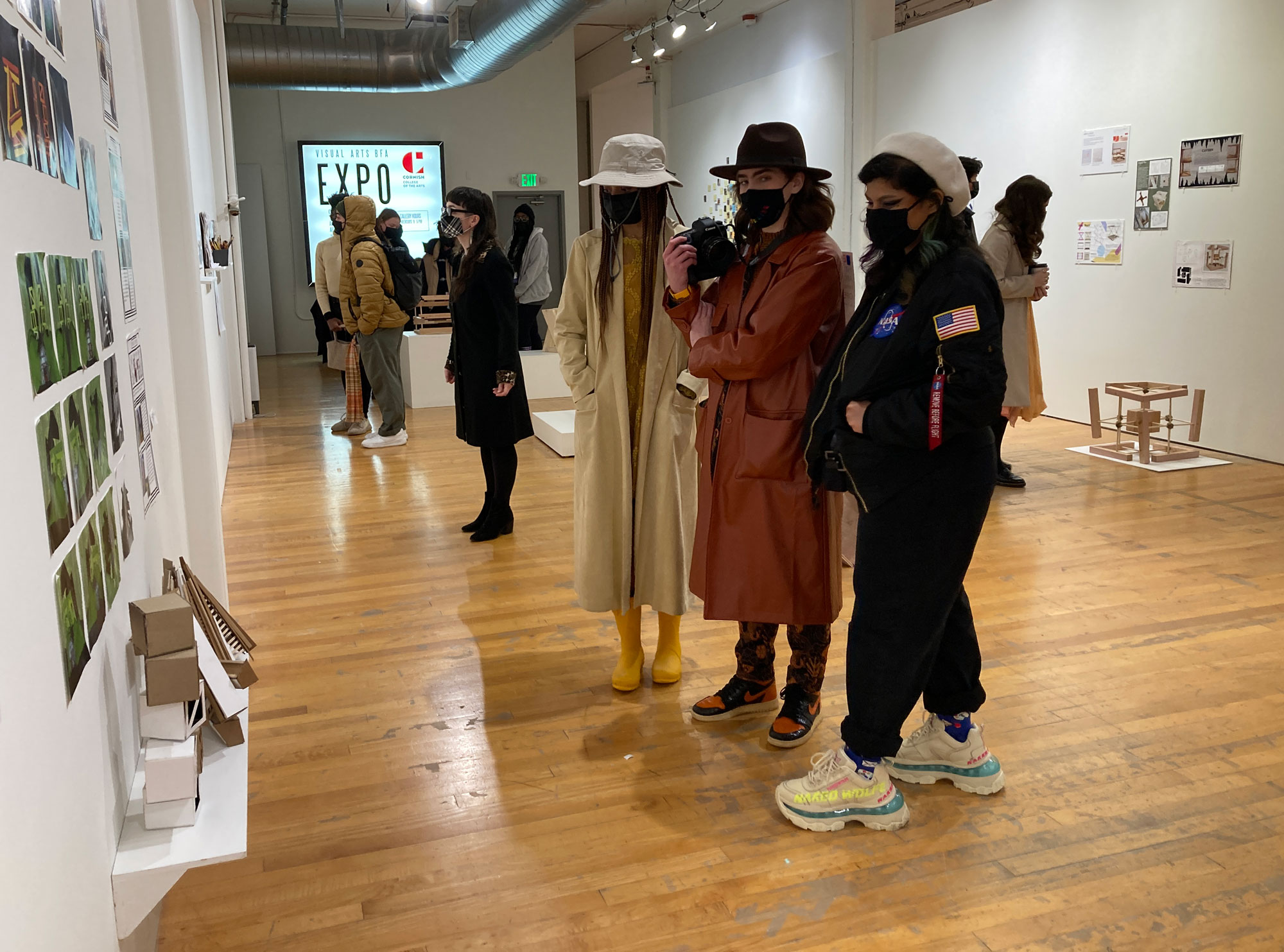
This school year, the Interior Architecture Department’s theme “Design for 2040” engages students in the observation of the past and present global conditions while envisioning and navigating their future as design leaders. The curricular activities take a lens to the fascinating designers who also sought answers in the future. This theme culminated in an exhibition of student work showcasing the IA Experience studio integrated courses and the learning outcomes of student work from fabrication and object design to interior design, to historical studies.
“Designing for the future has historically been a fascinating topic for designers and architects. There are a lot of future visions in history, some of which became reality, some remain in textbooks as crazy ideas,” said Ozge Sade Mete, assistant professor in the department of Interior Architecture. “Our approach this semester was to realistically project on to a very specific time period, not too far off, only 20 years from now, and offer design solutions for the immediate and obvious issues such as climate change, social equity, and globalization, which we know for sure needs close attention in the next 20 years.”
Early 20th century views of the future such as Le Corbusier to Frank Llyod Wright’s highly controversial ideas about high rises, Italian futurists’ machine-like structures to Russian constructivists’ gravity defying compositions and the schemes Archigram suggested later in the century like the Walking City are some inspirational sources. The goal of “Design for 2040” is to vision projects on to a 20-year period of responsible designing practices with climate change, social equity, community building, and globalization in mind.
As we still navigate through a pandemic and social equity challenges as well as experience an environmental crisis, the department has been investigating questions such as “In the next two decades how should we as designers evolve to create spaces for a future that requires us to address climate crisis, racial and gender inequity, and public health issues?” “What type of a role is our region, the Pacific Northwest, going to have 20 years from now within the rapidly globalizing world?”
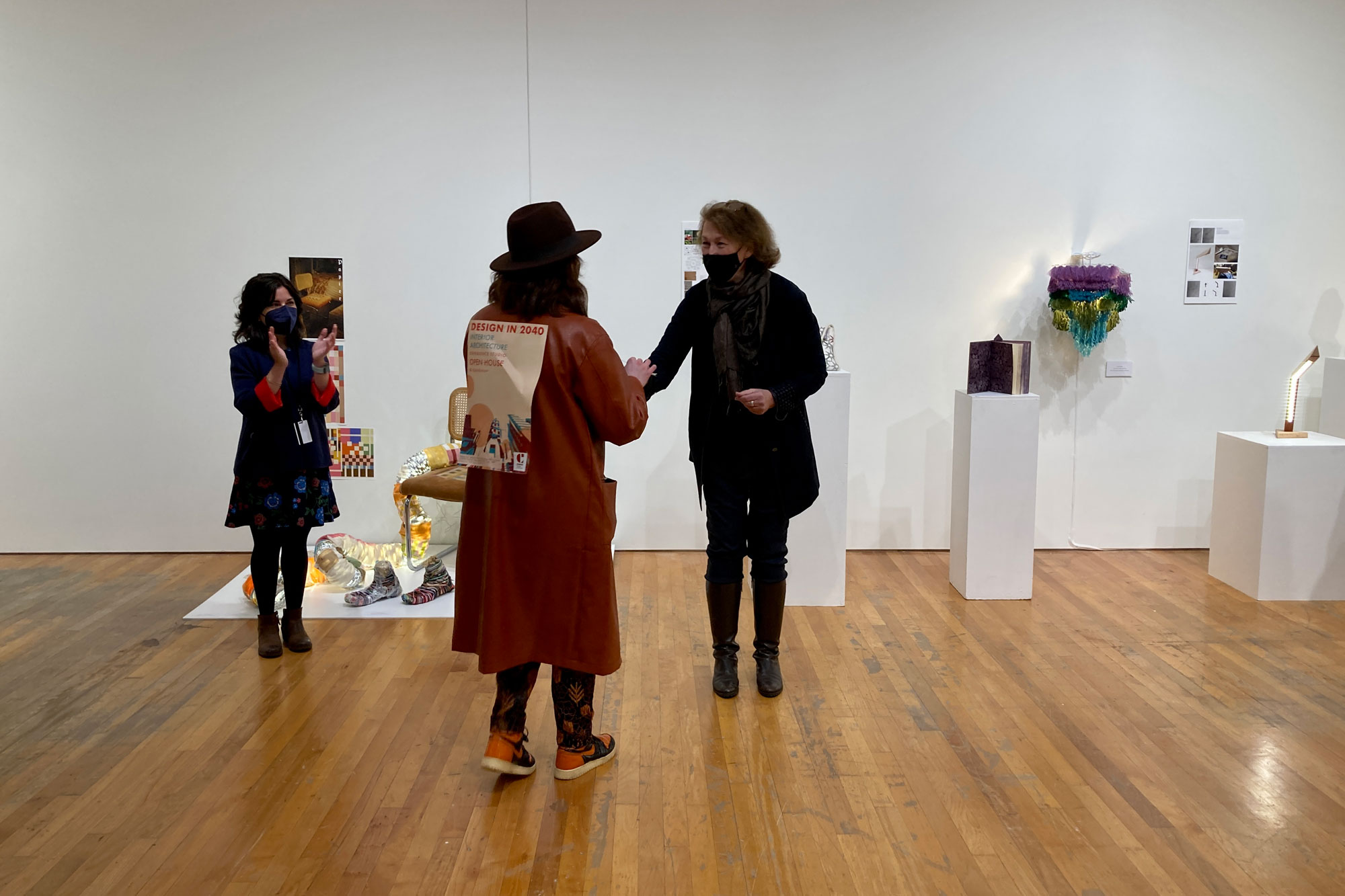
In following this theme, some of the recurring elements students exhibited in their work included climate change and social equity. Among these is Tre Suber’s Complex Systems project, which received the “Best in Social Practice Award.”
“Tre’s project proposes immersive environmental graphics for Black businesses in Westlake Center. He imagined a future, where Black people’s central position in the downtown core will be just normal instead of something to fight for,” Ozge said, noting that Tre presented his work in video format in the exhibit Open House.
Amelia Rurey’s Complex Systems project offers spaces for homeless people for their reintegration to the public. Amelia designed bathrooms that are open to everyone, and a bar area for the homeless to find training and employment in the former Macy’s building in Downtown Seattle—emphasizing the existing Art Deco aspects of the building in the design.
Howie Day’s Complex Systems project envisions a hotel space in a globalizing world around the idea of travel in the future. Howie designed a hotel building in Pioneer square with intentions of bringing the urban and natural aspects of the region together, challenging the conventional opposition between the urban and the natural environment and emphasizing a connection the the natural Pacific Northwest aesthetic.
Three other projects—from Emmanuel Henry, Isa Overstreet, and Bradley Sanders—focused on green design as a recurring element in designing for the future.
Emmanual Henry designed apartments in which inhabitants can grow their own food—a sustainable element sensitive to climate change. Isa Overstreet and Jasmin Brollier, both designed urban parks. Isa’s project especially emphasized a local and sustainable greenery in Lake Union Park.
Among these projects, there were several that embodied this year’s theme in an unexpected way, Ozge said. “Isa Lichtenberg’s Complex Systems project proposes a therapy center for the grieving people. Isa brought in a topic that has not been thought of in the field and contributed to future projections with a new typology.”
Bradley Sanders offered to reintegrate maker’s space in the rapidly changing downtown scene. Brad’s approach helps preserve the crafts in the region from disappearing and proposes ways to make them part of the future developments in the area.
“Marcus Mendez’s project can also be considered surprising, as he created a news history museum, which pointed at the dynamics between history and the future,” Ozge said. “To Marcus, the future brings more history, more preservation and remembering.”
The Interior Architecture “Design for 2040” exhibition is currently on view at the 9th Ave. Gallery in the Beebee Building. Due to Covid-19 protocols, the exhibit is closed to the public and available only to Cornish students, faculty, and staff through Jan. 19.








